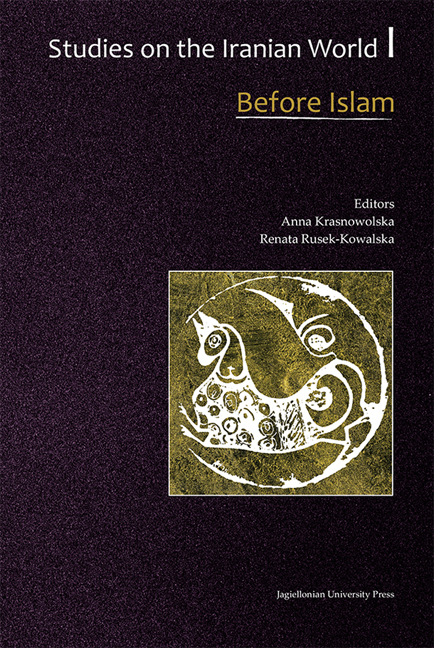Pāikūlī in Its Geographical Context
from Archaeology
Published online by Cambridge University Press: 12 January 2018
Summary
SUMMARY
Starting in 2006, a joint team of Italian and Kurdish researchers has been working in the three provinces of Dahūk, Erbil and Sulaymānīyah in Iraqi Kurdistan. As part of this project, the team has investigated the monument that King Narseh built at the site of Pāikūlī from different points of view, archaeological, historical, epigraphical, etc. The present paper, read in the context of a panel presenting the different activities carried out in recent years by the Italian Mission in Iraqi Kurdistan, intends to highlight the historical importance that the territory where the monument is found has had throughout the course of the Sasanian era.
The Pāikūlī tower was built by the Sasanian emperor Narseh (293–302 AD) in a narrow valley at the southernmost edge of the Qara Dāgh range in western Zagros, about 100 km south of Sulaymānīyah, not far from the town of Darband-i Khān. This commemorative monument marks the spot where, during a dynastic struggle which began after Wahrām II's death, Narseh, marching from Armenia to Ctesiphon, met nobles and grandees who had gathered there to pay allegiance to the future king. At that time the tower stood on the physical northeastern boundary of Asōrestān, being one of the main gates to the hinterland of capital city, a heavily urbanized lowland region known later in Persian as dil-i Irānšahr, ‘the heart of the Iranian Kingdom.’ This ridge of the Zagros chain represents a point of transition between two worlds, Mesopotamia and the Iranian highlands, and this applies during the great span of time from the Achaemenids up to the Mongol invasion, during which Mesopotamia and the Iranian plateau were joined in a single imperial entity, though with some ups and downs.
Evidently with the intention of conferring a high propagandistic and ideological meaning to the monument celebrating his victory over Wahrām III and his allies, Narseh built the tower in a very evocative place, so that travelers crossing the Pāikūlī pass from the north saw it below them from a suggestive perspective and those coming from the plains found it on their way up to the mountain path (Fig. 1). The Qara Dāgh range rises like a great cliff of limestone; it measures, in its whole length, 128 km from the river Diyāla (SE), called in Kurdish Āw-i Sīrwān, to the Little Zab (NW).
- Type
- Chapter
- Information
- Studies on the Iranian World: Before IslamMedieval and Modern, pp. 267 - 278Publisher: Jagiellonian University PressPrint publication year: 2015



